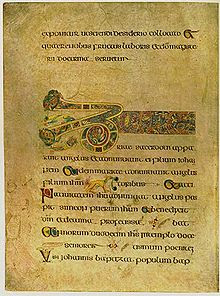Our
group took a trip to Trinity College in Dublin to view the Book of Kells. This
book is an illuminated manuscript copy of the four gospels (Matthew, Mark,
Luke, and John) in Latin dating from ca. 800. A community in Iona endured the
Vikings’ attack and created a monastery in Kells, County Meath, which is where
this book was made, although the specific monks’ names are unknown.
The Book of Kells is
made up of four volumes written on vellum, which is calf skin. Minerals from
across the globe were used to make up the array of vibrant pigmentations used
for the text and illustrations. The book contains illustrations of many
animals, humans, Celtic knots, and patterns. Unique large designs were even
used to indicate mistakes, rather than simply blotting them out or removing the
page.
The historical
significance of the Book of Kells is great. The Book of Kells is a physical
demonstration of the continuance of Christianity throughout the medieval age.
It also serves as an example of a work from a scriptorium. The authenticity of
the gospels is also reinforced as the Book of Kells is yet another early copy
of the exact same scriptures we consider to be authentic and inerrant today.
Members of our group
expressed that they found the Book of Kells to be awe-inspiring and stunning.
They were especially taken aback by the remarkable detail, especially in
contrast with the little detail given to prints of books today. It was amazing
to us to consider the awe with which the monks must have held the scriptures,
considering the vast amount of time they spent elaborating on and detailing the
Book of Kells.
Since
we were unable to take pictures of the Book of Kells, these were obtained from
the Wikipedia page about the Book of Kells:
This
is the page that opens the Gospel of John.
This
picture from the Book of Kells is of Christ enthroned.
This
shows the intricacy of design put even into the text.
This
picture shows the complexity of the designs in the Book of Kells.




No comments:
Post a Comment